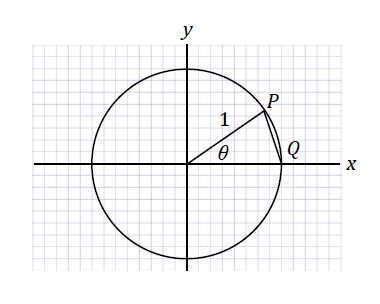Science:Math Exam Resources/Courses/MATH110/December 2012/Question 03 (d)
{{#incat:MER QGQ flag|{{#incat:MER QGH flag|{{#incat:MER QGS flag|}}}}}}
• Q1 (a) • Q1 (b) • Q2 (a) • Q2 (b) • Q2 (c) • Q2 (d) • Q2 (e) • Q2 (f) • Q3 (a) • Q3 (b) • Q3 (c) • Q3 (d) • Q4 • Q5 • Q6 • Q7 (a) • Q7 (b) • Q8 • Q9 (a) • Q9 (b) • Q9 (c) • Q10 •
Question 03 (d) |
|---|
|
Calculate the following derivative. You may leave your answer unsimplified. , where is the area of the triangle with vertices at the origin, and , shown below. Note that the circle is of radius . |
|
Make sure you understand the problem fully: What is the question asking you to do? Are there specific conditions or constraints that you should take note of? How will you know if your answer is correct from your work only? Can you rephrase the question in your own words in a way that makes sense to you? |
|
If you are stuck, check the hint below. Consider it for a while. Does it give you a new idea on how to approach the problem? If so, try it! |
Hint |
|---|
|
Identify the base and height of the triangle in order to arrive at the area formula. Finding the height will involve a trig ratio. |
|
Checking a solution serves two purposes: helping you if, after having used the hint, you still are stuck on the problem; or if you have solved the problem and would like to check your work.
|
Solution |
|---|
|
First we need to find a formula for , the area of the triangle. The area of a triangle is . See the labeled picture below: The base of the triangle is a radius of the circle, which is equal to 1. We can find the height by a trig ratio. Using the blue right triangle, we can see that . So . Plugging these into our area formula, we get:
It is now easy to find the derivative,
completing the question. |
{{#incat:MER CT flag||
}}












